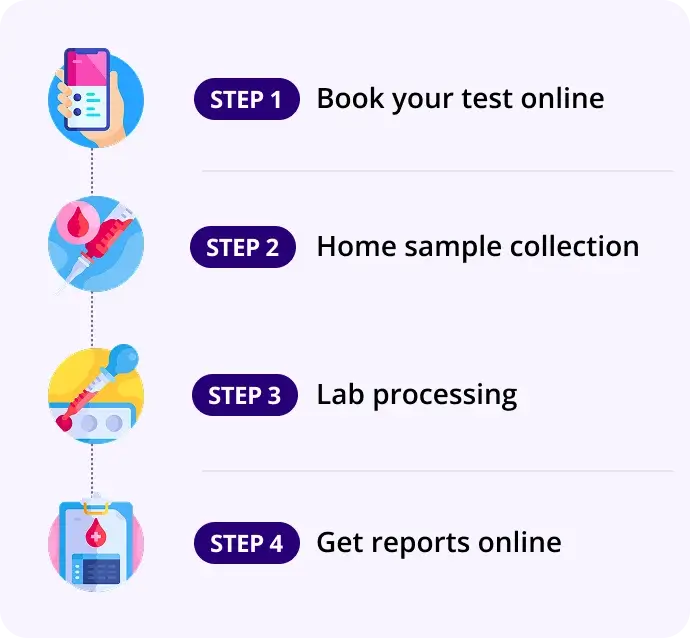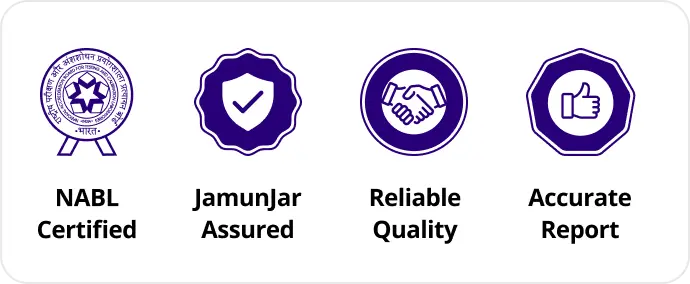Factor VIII Activity
Report in 60Hrs
At Home
No Fasting Required
Details
Factor VIII Activity — a crucial test in evaluating clotting function and bleeding disorders
₹3,149₹3,850
18% OFF
🧪 What is Factor VIII Activity?
Factor VIII (FVIII) is a clotting protein (also known as anti-hemophilic factor A) essential for the intrinsic pathway of the coagulation cascade. It works in conjunction with Factor IX to activate Factor X, leading to the formation of a fibrin clot.
The Factor VIII Activity Test measures the functional activity of Factor VIII in the blood to assess for:
- Clotting deficiencies
- Bleeding disorders such as Hemophilia A
❓ Why is the Factor VIII Activity Test Done?
To:
- Diagnose Hemophilia A
- Classify severity of hemophilia
- Investigate prolonged aPTT (activated partial thromboplastin time)
- Evaluate unexplained bleeding
- Monitor Factor VIII replacement therapy
- Detect inhibitors to Factor VIII in patients with hemophilia
📊 Normal Range
Parameter | Normal Value |
|---|---|
Factor VIII Activity | 50% – 150% of normal activity (or 0.5–1.5 IU/mL) |
🔍 Values may vary slightly by lab and reference population.
📈 Interpretation of Results
Result | Clinical Interpretation |
|---|---|
🔻 Low Factor VIII Activity | - Hemophilia A |
🔺 High Factor VIII Activity | - Acute phase reaction |
🧬 Severity of Hemophilia A Based on Factor VIII Levels
Factor VIII Activity | Severity |
|---|---|
<1% | Severe Hemophilia A |
1–5% | Moderate Hemophilia A |
5–40% | Mild Hemophilia A |
>50% | Normal or non-hemophilic |
🧠 Associated Organs & Systems
System/Organ | Role |
|---|---|
Liver | Produces Factor VIII |
Endothelium | Stores FVIII bound to von Willebrand Factor (vWF) |
Immune System | May form inhibitors against FVIII (acquired hemophilia) |
Reproductive (in women) | FVIII levels can rise in pregnancy or with estrogen use |
🔄 Related / Follow-Up Tests
- aPTT – Often prolonged in Factor VIII deficiency
- Factor IX Activity – To rule out Hemophilia B
- Von Willebrand Factor (vWF) Antigen and Activity
- Factor VIII Inhibitor Assay (Bethesda assay)
- Prothrombin Time (PT) – Typically normal in isolated FVIII deficiency
- Mixing Studies – To detect inhibitors
- Genetic Testing – For confirmed hemophilia A cases
- Thrombin Generation Assay – In some specialized centers
📝 Summary
Parameter | Summary |
|---|---|
What | Measures clotting function of Factor VIII |
Why | To diagnose/classify hemophilia A, assess bleeding, or monitor therapy |
Normal Range | 50%–150% (0.5–1.5 IU/mL) |
Low Value | Suggests Hemophilia A, vWD, DIC, liver disease |
High Value | Acute phase response, pregnancy, thrombosis risk |
Follow-up | aPTT, vWF panel, inhibitor assays, genetic testing if inherited disorder suspected |
How our test process works!

